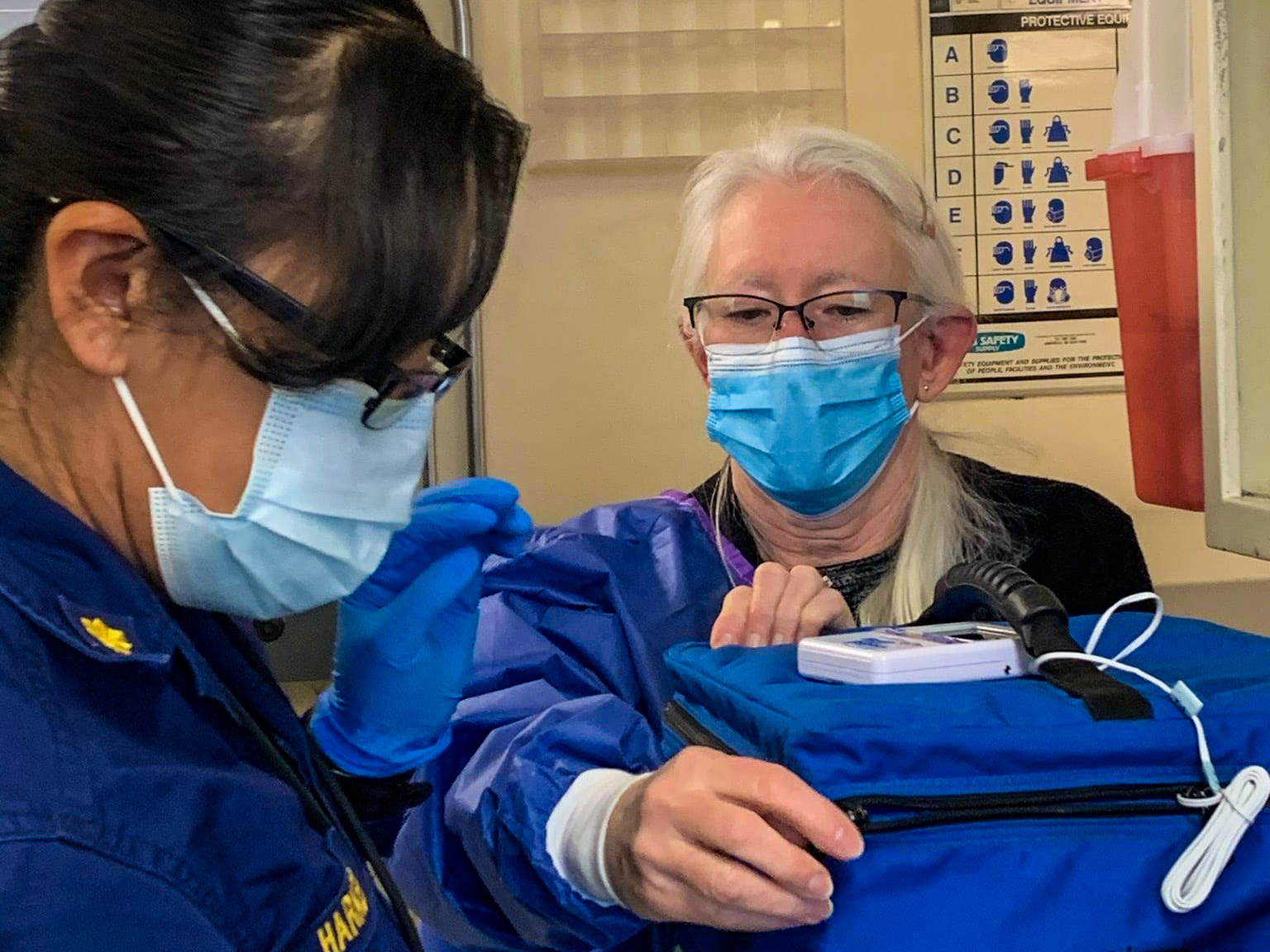Indianz.Com > News > COVID-19 vaccine arrives in Indian Country as cases continue to rise

COVID-19 vaccine arrives in Indian Country as cases continue to rise
‘A historic day in this fight’
Monday, December 14, 2020
Indianz.Com
Facilities across Indian Country have begun distributing a newly approved COVID-19 vaccine but the vast majority of tribal citizens will have to wait before they can be protected from a disease that continues to ravage their communities.
From Ojibwe territory in northern Minnesota to the largest reservation in the United States, the shipments of the coronavirus vaccine began arriving at Indian Health Service facilities on Monday. The doses are part of a first wave of distributions the agency will be receiving this month.
“The IHS has been a consistent voice and advocate for vaccine allocation across the Indian health system and tribal communities,” Rear Admiral Francis Frazier, a citizen of the Cheyenne River Sioux Tribe, said during a media call on Friday.
| IHS Area | Anticipated Pfizer Doses | Anticipated Moderna Doses |
|---|---|---|
| Albuquerque | 975 | 2600 |
| Bemidji | 1950 | 2900 |
| Billings | 975 | 1700 |
| California | 975 | 5100 |
| Great Plains | 1950 | 3000 |
| Nashville | 975 | 3400 |
| Navajo | 3900 | 7900 |
| Oklahoma City | 5850 | 8900 |
| Phoenix | 3900 | 7300 |
| Portland | 975 | 2300 |
| Tucson | 0 | 900 |
| TOTAL | 22425 | 46000 |
Still, as the vaccine becomes more widely available, the IHS plans to utilize prior experience in protecting tribal citizens from viruses. The Pfizer/BioNTech and Moderna products are notable in that they require recipients to receive two doses to become inoculated. “We’ve had practice with this, with the shingles vaccine, which is a two-dose series,” said Commander Kailee Fretland, a descendant of the White Earth Nation who is the deputy lead on the IHS COVID-19 vaccine task force. “So our facilities have created education pathways of getting those patients back for their second dose, so this is something we are familiar with,” Fretland said on the media call on Friday. According to Pfizer and BioNTech, their COVID-19 vaccine was found to be more than 90 percent effective during clinical trials conducted over the last few months. More than 43,500 people participated in the study, the companies said. However, the companies have not provided details on the number of American Indian and Alaska Native people, if any, who participated. The same goes for Morderna, whose documents lump Native people into an “All Others” category. “We know the task ahead poses many challenges, from tricky distribution logistics to coordinating vaccination events on tight timelines to data reporting every step of the way, however it is more important than ever to meet these challenges head on,” said CEO Bohlen of the National Indian Health Board. “Tribes are ready to take on these challenges to protect the health of their citizens,” said Bohlen, who is a citizen of the Sault Ste. Marie Tribe of Chippewa Indians. According to figures provided to Indianz.Com, the IHS user population is 1,662,834 as of 2019. The user population is defined as the number of American Indians and Alaska Natives who have lived within an IHS service delivery area and have received health care at an IHS or tribal facility during the previous three years. The IHS service population, on the other hand, is a much higher number. According to the agency, 2,562,290 American Indians and Alaska Natives were eligible to receive services through the IHS in 2019.The Indian Health Service has begun distributing #COVID19 vaccine doses to Indian Country.
— indianz.com (@indianz) December 14, 2020
Will you take the #Coronavirus vaccine if offered to you by @IHSgov or by your tribal nation?https://t.co/3Qll1CUhG1#COVID19Vaccine #CoronavirusVaccine
Search
Filed Under
Tags
More Headlines
Native America Calling: How Native literature is changing the mainstream narrative
Native America Calling: No ordinary animal
Native America Calling: Safeguards on Artificial Intelligence
NAFOA: 5 Things You Need to Know this Week
Chuck Hoskin: Cherokee Nation takes the lead for our environment
Native America Calling: Earth Day assessment for Native peoples
Cronkite News: Gathering addresses ‘epidemic’ among Native people
VIDEO: Cody Desautel on tribes and federal forest management
AUDIO: Legislative Hearing on Discussion Draft of Forest Management Bill
Native America Calling: Remembering the 1974 Navajo border town murders
Native America Calling: Can the right approach close the Native immunization gap?
Cronkite News: Long COVID cases remain high in Arizona
Native America Calling: Eyes in the sky for development, public safety, and recreation
Native America Calling: Three new films offer diverse views of Native life
NAFOA: 5 Things You Need to Know this Week
More Headlines
Native America Calling: No ordinary animal
Native America Calling: Safeguards on Artificial Intelligence
NAFOA: 5 Things You Need to Know this Week
Chuck Hoskin: Cherokee Nation takes the lead for our environment
Native America Calling: Earth Day assessment for Native peoples
Cronkite News: Gathering addresses ‘epidemic’ among Native people
VIDEO: Cody Desautel on tribes and federal forest management
AUDIO: Legislative Hearing on Discussion Draft of Forest Management Bill
Native America Calling: Remembering the 1974 Navajo border town murders
Native America Calling: Can the right approach close the Native immunization gap?
Cronkite News: Long COVID cases remain high in Arizona
Native America Calling: Eyes in the sky for development, public safety, and recreation
Native America Calling: Three new films offer diverse views of Native life
NAFOA: 5 Things You Need to Know this Week
More Headlines